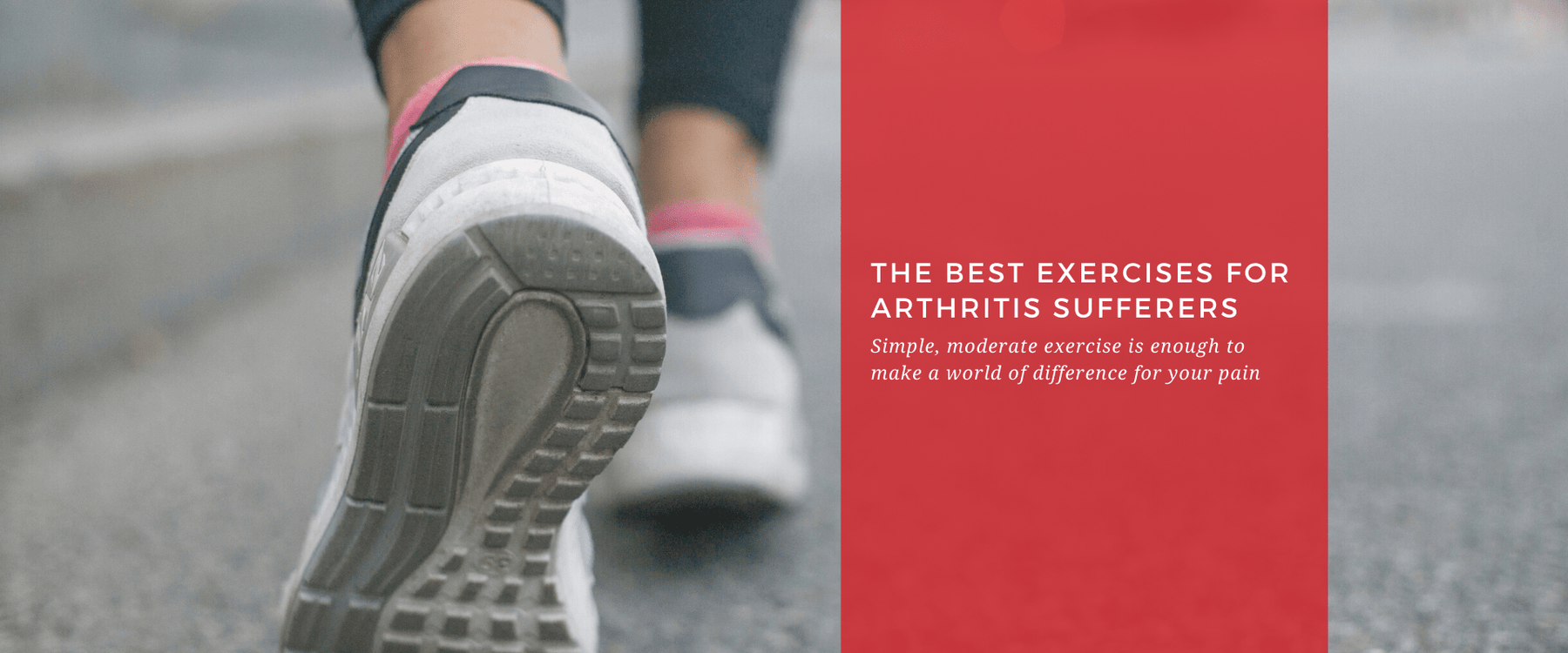With over 1 million orders

The Best Exercises For Arthritis Sufferers
Exercise is critical for easing arthritis pain and stiffness.
This may seem counterintuitive for anyone who deals with chronic joint pain. After all, it’s hard to get up and get moving when you can barely get yourself out of bed. But exercise when you have arthritis doesn’t mean you have to train for a marathon or follow a cross fit program. Simple, moderate exercise is enough to make a world of difference for your pain and maintaining your weight.
When Arthritis Threatens to Immobilize You, Exercise Can Help Keep You Moving
We get it, dealing with painful and stiff joints day in and day out because of arthritis makes exercise the very last thing that we want to do. However, lack of exercise can actually make your symptoms worse.
Keeping the muscles and surrounding tissue around your joints strong is essential to ensuring long term support for your bones. When you don’t exercise, these muscles weaken and that leads to additional stress on your joints. Additionally, lack of exercise makes it harder for arthritis sufferers to maintain a healthy weight, which is crucial for ensuring less stress on joints.
Finding the right exercise program and sticking to it can help you improve your overall health and fitness without aggravating your joints. Combined with a comprehensive treatment program, incorporating exercise into your daily routine can:
- Strengthen muscles around your joints that help with flexibility and mobility
- Help you maintain bone strength
- Contribute to giving you more energy throughout the day
- Help give you better quality sleep
- Improve your balance
- Help you control your weight
- Help you manage your mood better
- Enhance your quality of life
Work Closely With Your Doctor To Find the Right Exercise Program
Because you’re dealing with chronic pain, it’s important that you work closely with your healthcare team to learn how you can incorporate a consistent exercise program with your current treatment plan.
What types of exercises are best suited for you will depend on the kind of your arthritis that you suffer from and what joints are affected by your condition. A doctor or physical therapist can help determine what programs will maximize benefits while minimizing the stress on your joints.
- Strengthening Exercises: To help strengthen muscles that are essential to supporting and protecting your joints, strengthening exercises such as weight training is crucial. Some tips to remember—avoid exercising the same muscle groups two days in a row, listen to your body and allow yourself to rest in between workouts. And if your joints are feeling extra stiff and swollen, it’s ok to take some extra time to rest. When it comes to strength-training, a three-day a week program is usually sufficient to help you jump-start a regimen that you can stick to long-term and start seeing results.
- Aerobic Exercises: For overall fitness, aerobic exercise is great for improving cardiovascular health, controlling your weight, and helping you gain more stamina and energy despite your condition. Choose low-impact aerobic exercises that are easy on the joints—walking, cycling, swimming, or using an elliptical machine. Generally, the goal is to do 150 minutes of moderately intense aerobic exercise weekly, but it’s important to listen to your body and do only what you reasonably can. Don’t push yourself too much—the important thing is for you to safely carry out exercises that get you moving.
- Range of Motion Exercises: These are exercises designed to help relieve stiffness in your joints and increase your flexibility by exercising their full range of motion. Usually, these are simple movements using gentle, repetitive sequences and can be done daily.
Remember, any movement, no matter how small can help if you have arthritis. Aerobic, range of motion, and strengthening exercises done along with your daily activities are essential to maintaining your flexibility and improving quality of life despite your arthritis.
If needed, using compression products for additional support can help when doing these exercises.
Some Tips To Help Protect Your Joints
It’s important that you slowly ease into your exercise routine and that you follow a program that’s sustainable for consistency. Don’t overdo it—especially if you haven’t been active for a while. Avoid overworking your muscles, which can only worsen your joint pain.
Keep the following in mind:
- Keep it low impact—elliptical trainers, exercising in water, using recumbent bikes—all these help minimize stress on your joints while moving.
- A hot compress can help relax your joints and muscles, even ease pain before you begin exercising. Remember, a hot pack should be warm, not hot. It should never at any point scald or burn you and should be applied for at least 10-20 minutes.
- Allow your joints to gently warm up—you can start with range of motion exercises to prime your joints before moving on to more intense aerobic or strengthening exercises.
- Apply a cold compress or ice bag after your exercise if needed, this can help prevent joint swelling.
- Listen to your body and respect its boundaries. Don’t push yourself too much, there will be time to increase your intensity as you progress.
